Cuckoo catfish - Synodontis multipunctatus
Scientific name: Synodontis multipunctatus
Common name: Cuckoo catfish
Family: Mochokidae
Usual size in fish tanks: 13 - 15 cm (5.12 - 5.91 inch)
014
Recommended pH range: 8 - 8.9
Recommended water hardness: 8 - 18°N (142.86 - 321.43ppm)
0°C 32°F30°C 86°F
Recommended temperature range: 21 - 28 °C (69.8 - 82.4°F)
The way how these fish reproduce: Spawning
Where the species comes from: Africa
Temperament to its own species: peaceful to males
Temperament toward other fish species: peaceful
Usual place in the tank: Bottom levels
Origin
The Cuckoo Catfish (Synodontis multipunctatus) hails from the freshwater depths of Lake Tanganyika in East Africa. This lake is known for its unique biodiversity and is home to many endemic species. The rocky shores and sandy substrate of Lake Tanganyika provide the ideal environment for these catfish. In the wild, they can be found hiding among rocks and crevices, emerging during the day to feed. Their natural habitat offers a diverse range of food sources, including invertebrates, algae, and organic matter.
Lifespan
With proper care and an appropriate tank environment, the Cuckoo Catfish can live for an impressive 15 years or more. Providing a well-maintained aquarium with stable water conditions, a nutritious diet, and suitable tank mates will contribute to their long-term health and vitality.
Food and Feeding
The Cuckoo Catfish is an omnivorous species with a hearty appetite. In the aquarium, they will thrive on a varied diet that includes high-quality sinking pellets and flake foods. To keep them in optimal condition, supplement their diet with live or frozen foods such as bloodworms, brine shrimp, and daphnia once or twice a week. These protein-rich treats not only satisfy their natural hunting instincts but also enhance their coloration and overall health.
In addition to protein sources, it's important to provide vegetable matter in their diet. Blanched and crushed peas, cucumber slices, and zucchini are excellent choices. Vegetables help maintain a balanced diet and prevent digestive issues. Be mindful not to overfeed, as Cuckoo Catfish are known for their voracious appetite and can easily become overweight if allowed to eat excessively. Feed them once or twice a day in moderate amounts, ensuring that they consume the food within a few minutes.
Sexing
Sexing Synodontis multipunctatus can be challenging. The most reliable method involves examining the ventral area of mature individuals. In females, the genital papilla is rounder and more pronounced, while males have a longer, more triangular-shaped papilla. This method requires careful observation, and it may be easier to distinguish sexes during the breeding season when females are plumper due to carrying eggs.
Breeding
Breeding Cuckoo Catfish in captivity is both fascinating and unique, reflecting their namesake behavior. These catfish exhibit a parasitic breeding strategy, similar to the cuckoo bird. In the wild, they synchronize their spawning with mouthbrooding cichlids, primarily members of the Haplochromis genus. During the cichlid's spawning process, the Cuckoo Catfish quickly deposits its eggs among those of the cichlid. The unsuspecting cichlid then collects all the eggs, including those of the catfish, into her mouth for brooding.
The catfish eggs hatch faster than the cichlid's, and the catfish fry will consume the cichlid eggs, often leaving the cichlid mother to care for them, believing they are her offspring. To replicate this unique breeding behavior in the aquarium, it is best to keep Cuckoo Catfish with breeding mouthbrooding cichlids. Spawning is less likely to occur if the catfish are kept in a tank without suitable cichlid hosts. A water temperature of 25-27°C (77-81°F) and a slightly alkaline pH will help encourage spawning behavior.
Tank Setup and Environment
Cuckoo Catfish are more active during the day compared to other Synodontis species, so they require a well-structured tank that accommodates their activity level. A minimum tank size of 200 liters (52 gallons) is recommended, with a length of at least 120 cm (48 inches) to provide ample space for a small group of these catfish. Include plenty of rocks, caves, and crevices to create hiding spots and territories, mimicking their natural habitat in Lake Tanganyika.
They prefer a sandy substrate that allows them to dig and forage without damaging their sensitive barbels. Dim lighting is essential, as bright lights can cause stress and make them hide more during daylight hours. Floating plants or subdued lighting can help create a more comfortable environment. Water parameters should be maintained within the range of pH 8.0-8.9, with a temperature of 21-28 °C (69.8-82.4°F). Efficient filtration and regular water changes are crucial to maintain high water quality, as these catfish are sensitive to poor water conditions.
Compatibility and Tank Mates
Though generally peaceful, Cuckoo Catfish can become territorial, especially with other bottom dwellers. They are best kept in groups of at least 3-5 individuals to exhibit their natural social behavior and reduce stress. Avoid housing them with very small fish, as they may view them as a potential food source. Ideal tank mates include medium to large cichlids, especially those from Lake Tanganyika, such as Frontosas, Cyphotilapia, and other peaceful cichlid species. Avoid keeping them with aggressive or overly territorial species, as this can lead to conflicts and stress.
Short Description
The Cuckoo Catfish (Synodontis multipunctatus) is a unique and captivating species known for its active daytime behavior and distinctive breeding strategy. Unlike many other Synodontis species, Cuckoo Catfish are more active during daylight hours, making them an interesting addition to the aquarium. They exhibit a parasitic spawning strategy, laying their eggs among those of mouthbrooding cichlids. Despite their intriguing breeding habits, they are relatively peaceful fish, suitable for a community tank with other cichlids of similar size.
These catfish grow up to 15 cm (6 inches) in length and require a spacious tank with ample hiding spots and subdued lighting to feel secure. They thrive in a well-maintained aquarium that mimics their natural habitat, with a sandy substrate, rocks, and caves. While they are not aggressive, they may eat smaller fish if given the opportunity. To keep them healthy and active, provide a varied diet that includes sinking pellets, live or frozen foods, and occasional vegetables.
Pictures
Bought by aqua-fish.net from jjphoto.dk.



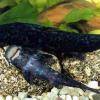 Euchilichthys
Euchilichthys 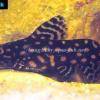 Angel
Angel 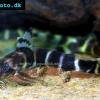 Brichard’s
Brichard’s 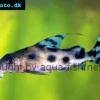 Decorated
Decorated  Featherfin
Featherfin 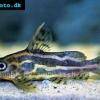 Orangestriped
Orangestriped 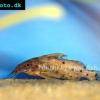 Lace
Lace 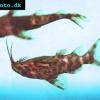 Upside-down
Upside-down 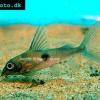 One
One 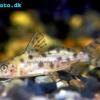 Ocellated
Ocellated  Robert’s
Robert’s